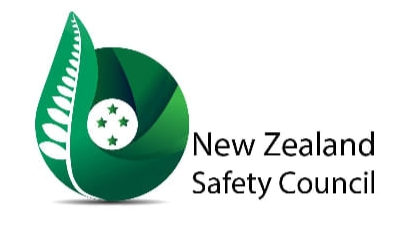New Zealand’s Safety Council and HASANZ(the Health and Safety Association for New Zealand) have recently joined together to help improve the Health and Safety industry for MBIE and WorkSafe. One of the main streams is ‘competency,’ and so New Zealand Safety Council have a safety professional framework, where those who pass, are the designated RSP - Registered Safety Professional.
Building a pathway
“What we’re doing is building a pathway for people to understand more about higher education’s relevance. We want to build the number of capable professionals in the market who have experience, as well as the academic qualifications.”
Karyn explains that the New Zealand Safety Councilare currently assessing how those who don’t have a degree, or a relevant degree in health and safety, from the Level 6 Diploma or the RSP, can go straight into the Victoria University Masters program in Occupational Health and Safety, with the option to move on to the PhD program if they wanted to.
“What that means for the market is that the level 6 diploma, although it serves us very well and it absolutely has a place in the qualification’s framework, for those high risk or very large businesses, strategic professionals should not stop at a diploma.
There are many competency levels in management, business development and understanding specific technical skills. Certain things like research methodology for understanding and solving problems within a business cannot be learnt on a diploma course.
But you can get on a Masters course, and get recognition for the work we know how to do, as well as experience and instruction on things you might not have done yet. This is important for building capability in the market, as well as making sure chief executives, boards and businesses are getting high quality professionals and advice.”
The Masters program
Karyn says the framework is geared towards being able to function at that higher level of management and it has a particular focus.
“There will be a need to do a thesis / research project, which can be done within the business that the professional works with. It’s part time distance and that really appeals to people who are already working. They could do a research project on a current problem within the business, and thorough academic research, see if anybody else around the world has had a had a go at solving that problem.”
Breaking into safety
Karyn explains there are several ways to break into a safety career.
“It can be that someone already has a technical skill or a trade, or that they’ve done a degree or previous job and it’s not for them. They can step sideways into safety.For me personally, I think I was probably the first generation in New Zealand to specifically study safety, so after I did my business degree, I went straight on and did a postgrad in health and safety management. Now you can end up with a PhD in safety if you wish.
“What I would recommend is unless you’re planning on being a career academic, a lot of the content in it is applied management. You’re going to take the research projects and skills you’ve learned and apply them in a business for the benefit of risk management within that business.
I think that’s the primary reason that businesses, chief executives, and boards should get behind this- they’re really building their national bench strength or professional pipeline.”
Staying engaged with safety
“To be honest, safety is a great trojan horse for business continuous improvement. We recognize that there are some safety related issues, but none of these things ever occur in isolation. It usually has something to do with an absence of process and over ambitious risk appetite.
It might be that there’s a general lack of awareness for critical risks and controls. Someone may know safety, but then there’s quality, environment, business growth by acquisition. All these things are intertwined and affect each other. When we investigate a problem, we find there are many different root causes and very few of them are related to just safety.
However, the value generation within a business is continuous improvement. That’s what gets me out of bed!”
Taking the next step
Karyn advises that for those who don’t currently have a recognised degree, the next best step would be to enrol as a member of the New Zealand Safety Council, and then move through to the RSP process.
“Those 12 core competencies and that portfolio that those people will produce, as well as the feedback they get from the registrars and the hand holding that they can get through that process is an excellent prep for higher academic study.
If we don't get enough support for the RSP process and if it disappears altogether, the only route to accreditation will be academic. We're a nonprofit volunteer organisation doing this for safety people. The only other methodology is to simply study academically, rather than having someone help you learning on the job.”
To find out more about New Zealand Safety Council, or to become a member, click here.Alternatively, if you would like to speak to Shirley Parsons about your career in HSEQ and Sustainability, enter your details on the Contact Uspage and one of the team will be in touch.


